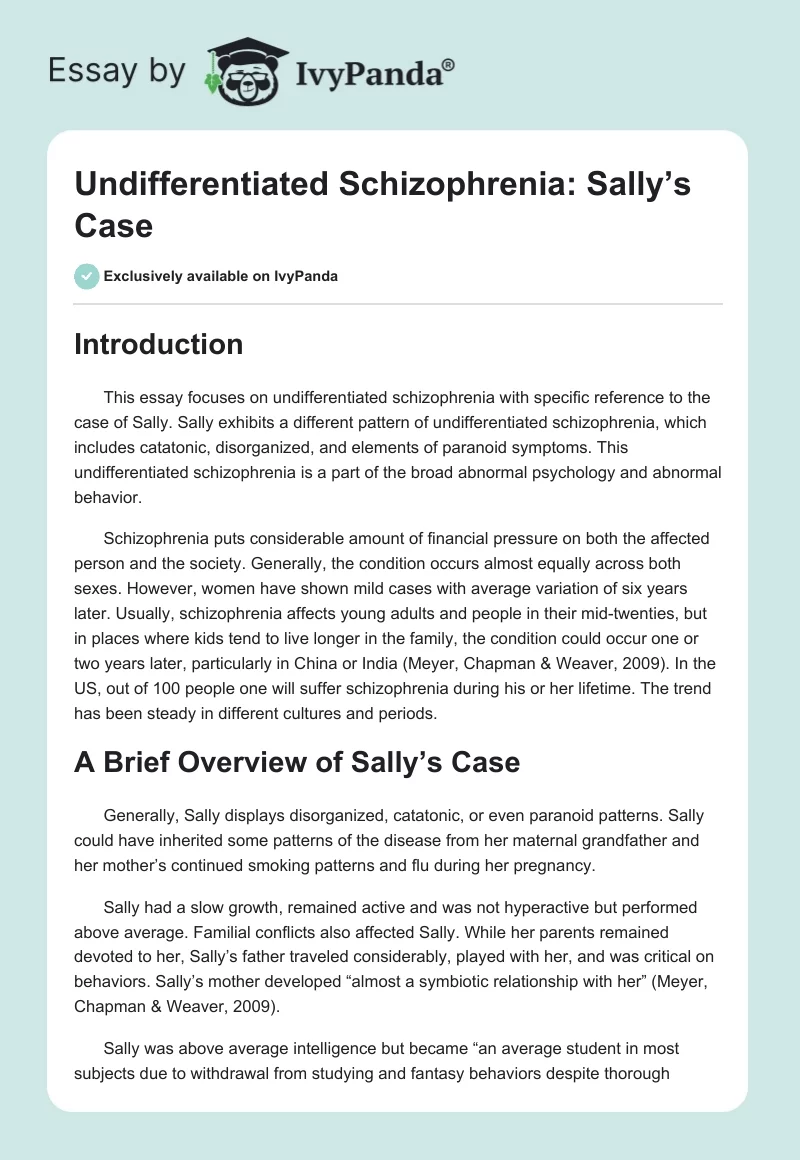Okay, so I’ve been diving deep into this abnormal psychology class, and let me tell you, it’s been a wild ride. We recently got our hands dirty with a case study on schizophrenia, and it was eye-opening, to say the least.

It all started with us getting assigned this hefty file on a patient – let’s just call him “Bryant” to keep things simple. At first glance, Bryant’s case was pegged as OCD, mainly because of his obsessive behaviors and the noticeable dip in his mood. But boy, were we in for a surprise.
We dug into his history, his symptoms, the whole nine yards. Turns out, schizophrenia isn’t just about seeing things or hearing voices. It messes with how you think, how you feel, and even how you interact with others. It’s like your brain’s playing tricks on you, and it’s far from a walk in the park for those going through it.
Delving into the Details
- Identifying Symptoms: We started by listing out all of Bryant’s symptoms. Besides the obvious OCD-like actions, we noticed patterns that screamed schizophrenia – the delusions, the hallucinations, the works. It was like putting together a complex puzzle.
- Tracing the Timeline: Next, we mapped out the timeline of his condition. Schizophrenia often kicks in during the late teens or early adulthood, and Bryant’s case was no different. Seeing how his symptoms progressed over time gave us a clearer picture of the illness’s trajectory.
- Exploring Treatments: We then explored the different treatment paths for schizophrenia. It’s a mixed bag of medication, therapy, and a whole lot of support from family and the community. It’s not just about popping pills; it’s about rebuilding a life.
The process wasn’t just about reading from textbooks. We had these intense discussions in class, sharing insights and even debating on the best approach to handle Bryant’s case. It felt less like a lecture and more like a brainstorming session among colleagues.
And then came the moment of truth – presenting our findings. We laid out our analysis, backed by all the research and discussions we had. It was nerve-wracking but also incredibly fulfilling to see how much we’d learned and understood about schizophrenia through this one case.

Wrapping it all up, this case study was more than just an assignment. It was a journey into understanding a complex mental illness that affects so many people. It taught me that there’s always more than meets the eye, especially when it comes to mental health. And while schizophrenia is a tough nut to crack, there’s hope and help out there for those who need it. It’s all about understanding, support, and never giving up on someone.














